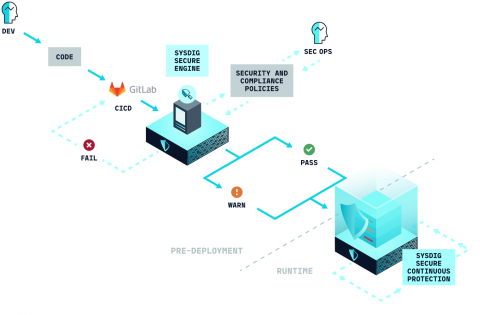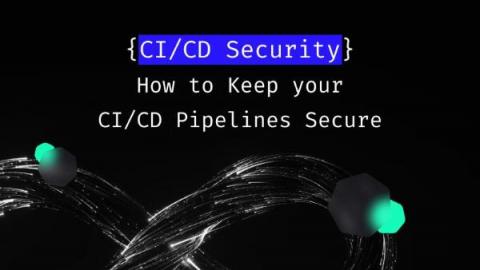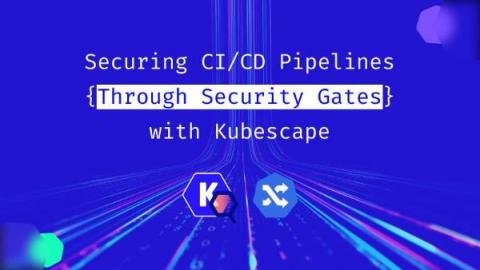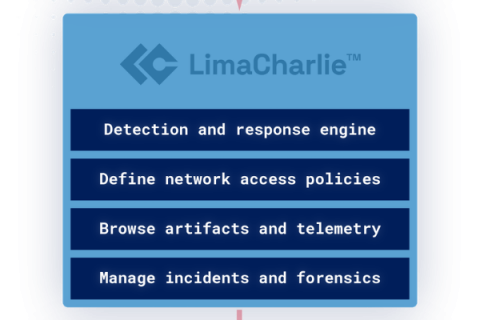Security | Threat Detection | Cyberattacks | DevSecOps | Compliance
CI CD
Image scanning for GitLab CI/CD
Scanning a container image for vulnerabilities or misconfigurations on your GitLab CI/CD using Sysdig Secure is a straightforward process. This article demonstrates a step-by-step example of how to do it. The following proof of content showcased how to leverage the sysdig-cli-scanner with GitLab CI/CD. Although possible, this procedure is not officially supported by Sysdig, so we recommend checking the documentation to adapt these steps to your environment.
CI/CD Security: How to Keep your CI/CD Pipelines Secure
Securing CI/CD Pipelines Through Security Gates with Kubescape
Container Image Scanning for Azure Pipelines with Sysdig
Scanning a container image for vulnerabilities or bad practices in your Azure Pipelines using Sysdig Secure is a straightforward process. This article demonstrates a step by step example on how to do it. The following proof of content showcased how to leverage the sysdig-cli-scanner in Azure Pipelines. Although possible, it is not officially supported by Sysdig, so we recommend checking the documentation to adapt these steps to your environment.
Integrating Snyk Open Source C/C++ security scanning into CI pipelines
Snyk Open Source supports C and C++ scanning for vendored open source dependencies via CLI — and we are happy to share that it is now available via our CI plugins as well. This guide will walk you through integrating C/C++ security scanning within pipelines to get vulnerability information and remediation advice directly to developers. Note that in the scope of this guide, we’ll refer to “C/C++” as just “C++”
Everything You Need to Know About CI/CD and Security
CI/CD is a recommended technique for DevOps teams and a best practice in agile methodology. CI/CD is a method for consistently delivering apps to clients by automating the app development phases. Continuous integration, continuous delivery, and continuous deployment are the key concepts. CI/CD adds continuous automation and monitoring throughout the whole application lifetime, from the integration and testing phases to delivery and deployment.
Bridging the security gap in continuous testing and the CI/CD pipeline
CI/CD pipeline attacks: A growing threat to enterprise security
CI/CD pipeline attacks are a growing threat to enterprise security. In this article, we’ll provide an overview of CI/CD for non-developers, discuss the cybersecurity issues involved, and offer some recommendations for developers, companies, and security teams.
Building a secure CI/CD pipeline with GitHub Actions
GitHub Actions has made it easier than ever to build a secure continuous integration and continuous delivery (CI/CD) pipeline for your GitHub projects. By integrating your CI/CD pipeline and GitHub repository, GitHub Actions allows you to automate your build, test, and deployment pipeline. You can create workflows that build and test every pull request to your repository or deploy merged pull requests to production.











